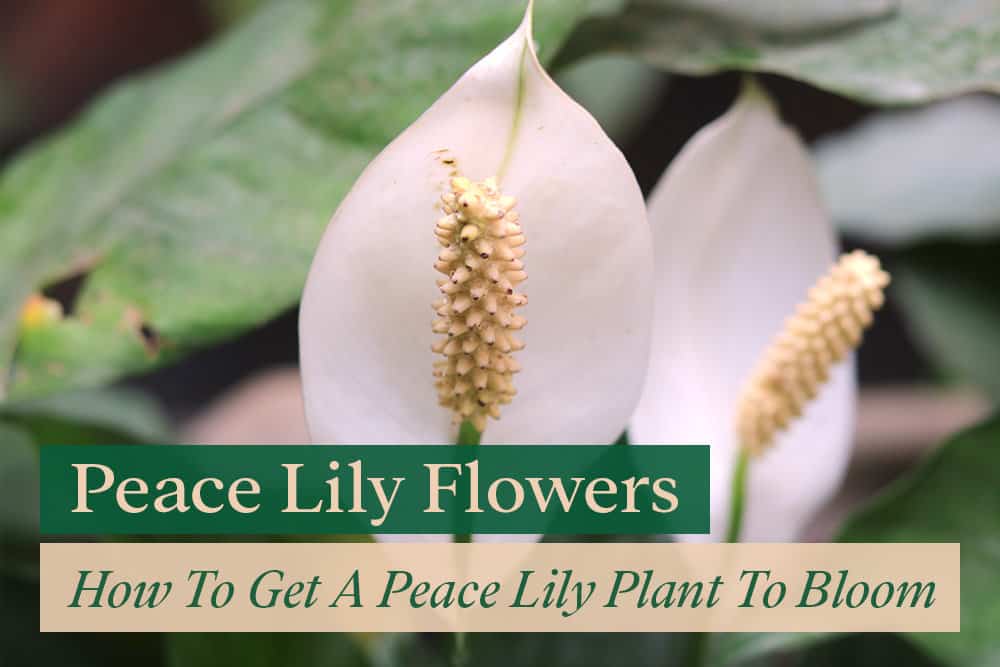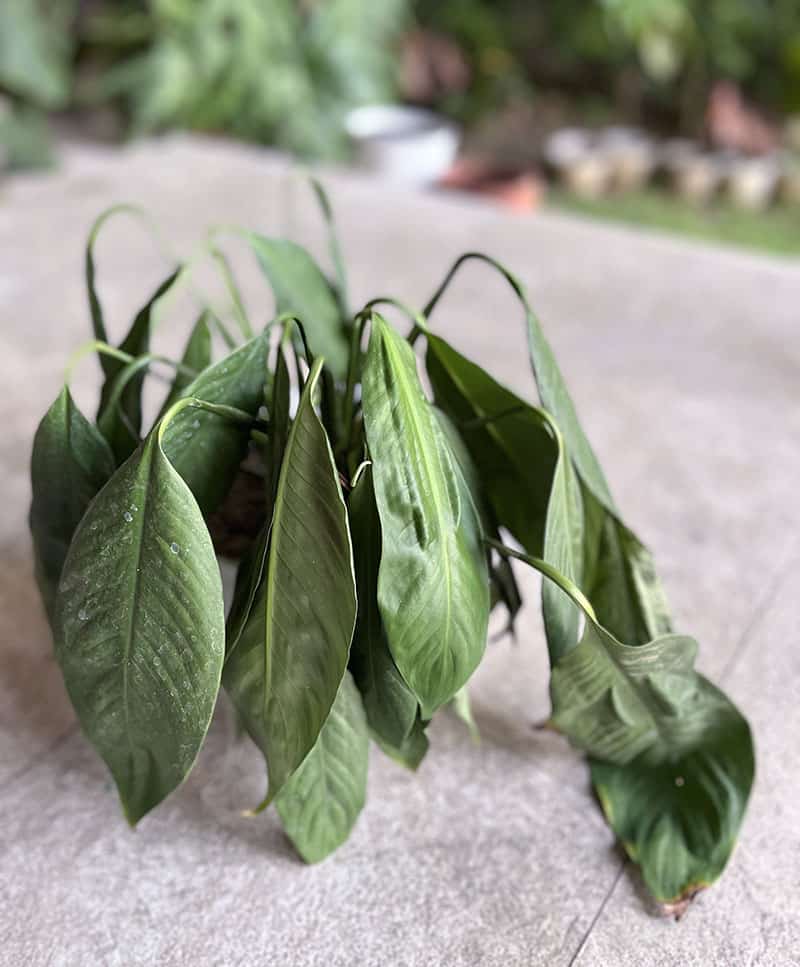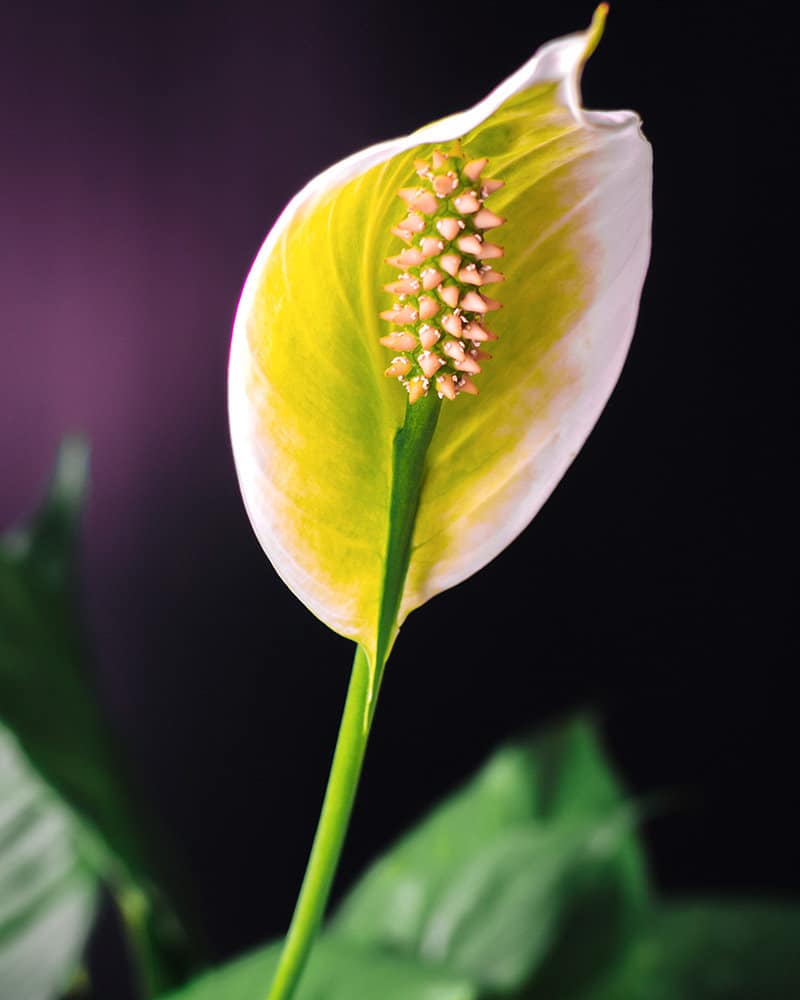
Did you buy a Peace Lily with beautiful white flowers and now it’s just never bloomed for you? Don’t worry, you’re not alone.
Generally, a Peace Lily will bloom twice a year, typically in the spring and fall. To encourage blooming, the plant needs to be kept in a warm environment, with plenty of bright indirect light, and provided with enough water and nutrients.
Without the proper growing conditions, a Peace Lily will likely go into survival mode and stop blooming.
This article will answer the following questions:
- When do Peace Lilies flower and how to keep them last longer
- Reasons why Peace Lily stops blooming and how to fix it
- Problems related to Peace Lily flowers
Let’s get started!
When Do Peace Lilies Bloom?
As Peace Lilies prefer warm conditions, they typically bloom in the spring and fall when the temperatures are between 65 – 86°F (18 – 30°F). However, in tropical regions, they can bloom all year round.
The flowers can last about a month before they start to fade and die, although, with the proper care, they can last even longer (up to 3 months).

You can also extend the lifespan of the flower by cutting off its spadix. This prevents pollen from falling onto the spathe, which makes it grow green and die.
But, regardless of the proper care, eventually, the flowers will start to wilt. When this happens, simply cut them off at the base of the plant.
Reasons Why Peace Lily Stops Blooming
The main environmental factors that affect Peace Lily blooming are photoperiod (light duration) and temperature, but other factors can also prevent Peace Lilies from blooming.
Let’s examine each of these in more detail:
1. Poor Lighting Conditions
Ideally, Peace Lily needs at least 10 to 12 hours of bright, indirect light every day to encourage blooming.
Light is necessary for Peace Lily to photosynthesis, which is the process that produces the energy the plant needs to grow and produce flowers.
If the plant is not getting enough light, it will likely go into survival mode and stop blooming.
However, too much direct sunlight can be damaging to the leaves as it can cause the leaves to scorch.
How to Fix:
Move your Peace Lily to a brighter location if you feel it is not getting enough light. To prevent scorched leaves, you can use sheer curtains to filter the sunlight.
If you can’t provide enough natural light, you can supplement with grow lights.
2. Incorrect Temperature
Temperature plays an important role in photosynthesis as well as light. For Peace Lily to bloom, the temperature needs to be between 65 – 86°F (18 – 30°C).
When the temperature drops too low, the plant goes into survival mode and stops blooming.
In contrast, excessive heat will denature the enzymes responsible for photosynthesis, reducing the amount of energy produced for blooming.
How to Fix:
You can use a thermometer to measure the temperature in the room where your Peace Lily is located.
If it is too cold, you can move the plant to a warmer location or use a heating mat to keep the temperature warm. Also avoid drafts from windows, doors, and air conditioners.
If it is too hot, you can move the plant to a cooler location or use a fan to circulate the air.
3. Inconsistent Watering Schedule
Photosynthesis requires water, light, and carbon dioxide to produce glucose (sugar), which is the plant’s food.
If the plant is not getting enough water, it will go into survival mode and stop blooming. The leaves will also start to droop, which is a sign that the plant needs to be watered.

How to Fix:
To fix this, water your plant regularly, making sure the potting mix is always moist but not soggy. A good rule of thumb is to water your plant once a week, or when the top two inches of the soil are dry.
You should water your plant until the water drains from its drainage holes. Afterward, remove any remaining water from the saucer to prevent root rot.
Peace Lily is also sensitive to chlorine, so make sure you’re using filtered or distilled water to avoid stressing the plant.
4. Lack of Nutrients
Like all plants, Peace Lily needs nutrients to grow and bloom. The three main nutrients needed for plant growth are nitrogen (N), phosphorus (P), and potassium (K).
These can be found in most commercial fertilizer blends, but if you want to give your plant a boost, you can use a fertilizer with a higher concentration of phosphorus, as this is the nutrient most associated with flower production.
How to Fix:
To correct a lack of nutrients, you can fertilize your plant every four weeks during the growing season using a balanced fertilizer.
Make sure you follow the directions on the package carefully, as too much fertilizer can damage the roots. Halfing the recommended amount is often a good starting point.
5. Dusty Leaves
As Peace Lily matures, its leaves can start to collect dust. This dust can block the stomata on the leaf surface, preventing the plant from taking in the carbon dioxide it needs for photosynthesis.

How to Fix:
To fix this, simply wipe the leaves down with a damp cloth or shower the plant. Be sure to use lukewarm water, as hot water can damage the leaves.
Regularly cleaning the leaves will also help to prevent pests from taking up residence on your Spathiphyllum plant.
6. Age of the Plant
If you believe that you have done everything right and your Peace Lily still won’t bloom, it could simply be that the plant is either too young or too old.
Spathiphyllum plants generally take two to three years to mature enough to bloom. If your plant is less than two years old, it may just need some more time to develop.
Conversely, a Peace Lily that is more than five years old may be past its blooming prime and may never bloom again.
How to Fix:
Although not recommended, you can use gibberellic acid to force your plant to bloom.
This is a plant hormone that encourages your Peace Lily to bloom in two months even if it is still too young and the flowering season is already over.
Simply, dilute gibberellic acid with water and apply it to the soil around your plant. This will give you quick results, but it can be harmful if it is not done correctly.
Problems Related to Peace Lily Flowers
Now, that you know how to get a Peace Lily to bloom, let’s take a look at some of the problems that can occur once it does.
Why are my peace lily flowers green?

There are three main reasons why your peace lily flowers might be green.
1. Receiving too much light
First of all, you might have given the plant too much light. This allows the plants to perform more photosynthesis and reveals the green pigment in the flowers.
Simply, move your plant to an area that receives less light, such as an east- or north-facing windowsill.
2. Over-fertilizing
Another reason for green flowers can be over-fertilizing. This causes an excess of iron and nitrogen in the plant, which can produce chlorophyll and make the flowers appear green.
Brown leaf tips on a peace lily may confirm that you have been over-fertilizing your plant.
To correct this, cut back on your fertilization schedule and flush the potting mix with clean water to remove some of the excess nutrients.
3. Natural life cycle
Lastly, the green color of your once-white peace lily flowers might just be part of its natural life cycle.
They start greenish-white and then gradually turn white as they mature. However, as the flowers start to die, they will turn green again.
So, if your peace lily flowers are starting to change color, don’t worry, it is just part of their natural life cycle. Simply remove the dead flowers from the plant.
Peace Lily Flower turns brown or black
When the Peace Lily flower life cycle is over, the flowers will turn brown or black. This is just part of the natural process and you should simply remove the dead flowers from the plant.

The life cycle of Peace Lily flowers can be anywhere from four to twelve weeks, depending on the care and conditions they receive.
Once the flowers turn brown, you should cut them off at the base of the stem using a sharp knife or pair of scissors. You don’t want to pull at the flower stalks because this could cause injury to the plant.
Frequently Asked Questions
Will Peace Lily bloom outdoors?
Peace Lily will bloom outdoors as long as they receive 10 to 12 hours of bright, indirect sunlight and grow at a warm temperature between 60 to 85℉.
If you live in an area with harsh sunlight, it is best to grow your plant in a shaded spot or filtered light.
If the temperature fluctuates too much or gets too cold, the photosynthesis process will slow down, and your plant may stop blooming. Bring your plant indoors or provide some sort of temperature-controlled environment.
Can you repot a peace lily while it’s flowering?
As you repot the plant, the roots will be disturbed and the plant will be stressed. This can cause the flowers to wilt and drop off.
It is recommended to repot your Peace Lily when it is not flowering. This gives the plant time to recover and reestablish itself before it has to put all its energy into blooming again.
Also read: How to Choose the Right Pot for Your Peace Lily
Can I use gibberellic acid to make my Peace Lily flower
Gibberellic acid is a plant hormone that can be used to encourage flowering. However, the flowers will usually appear distorted and may affect their ability to produce flowers again in the future.
It is best to avoid using gibberellic acid on your Peace Lily and instead focus on providing optimal growing conditions for your plant.
Also read: Peace Lily Leaves Turning Yellow: 7 Reasons, Signs & How to Fix it

